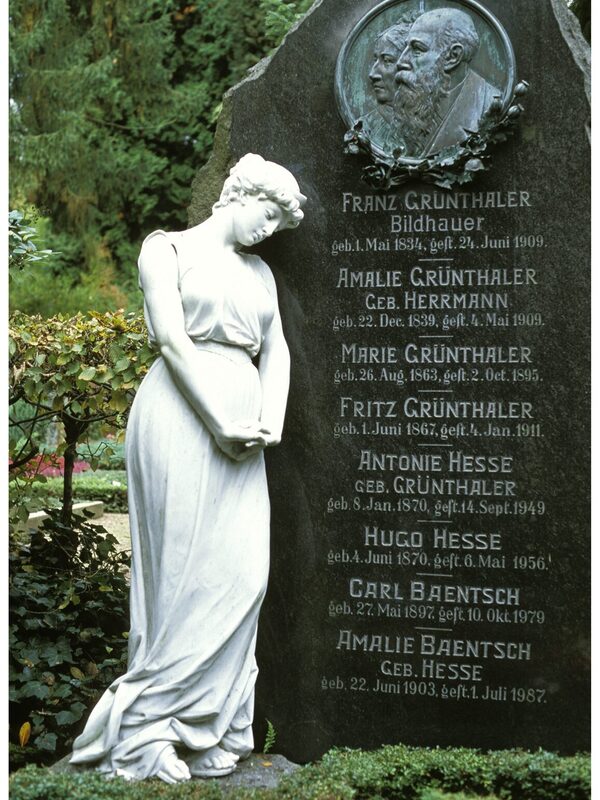North cemetery
Since 1874, the Wiesbaden municipal council had been discussing the construction of a new cemetery, later known as the North Cemetery. The site, a narrow, elongated ridge between Nerotal and Adamstal in the area of the Höllkund forest district, was owned by the city. This eliminated the costs that would have been incurred if the old cemetery had been extended by purchasing land. Another reason for the choice of the new burial ground was the increasing urban development: it was already foreseeable that the city would rapidly expand further north. For hygienic reasons, cemeteries outside of inhabited areas had been preferred since the times of the Enlightenment. However, the population complained about the long distances and the higher costs for the hearses. When the burial ground was laid out, the area was largely deforested. The proceeds from the sale of the wood were used to cover further costs. However, there was not enough money for a funeral hall: the funeral hall of the old cemetery was used until 1957, only then was a new building built.
At its inauguration in 1877, the North Cemetery still appeared rather bare, whereas today the literature praises "the picturesque interplay of surrounding nature, landscaping and a large number of green, historic gravesites". The character of the North Cemetery is determined by later plantings; only a few beech and oak trees remain from the time before it was laid out. Thanks to its valuable tree population, including a very high proportion of trees of life and cypresses, the cemetery becomes a kind of landscape garden, a "beautiful place of mourning", which is intended to make the thought of death reconcilable.
On a total area of 14.5 hectares, 85,000 people found their final resting place, including numerous well-known personalities, e.g. the composer and conductor Franz Abt, the writer Friedrich von Bodenstedt, Wiesbaden industrialists and politicians.
In 1878, an orthodox Israelite cemetery was established on the eastern side and a liberal Israelite cemetery at the northern end with a Moorish-style mourning hall. In 1890, the cemetery was extended by about half its previous length. A columbarium for urn burials was built in 1895, and a new urn hall was built in 1902 according to plans by the city architect Felix Genzmer.
The architectural and landscape design as well as the large number of artistically significant gravestones led to the cemetery as a whole being placed under a preservation order. Citizens or organizations can sponsor listed gravestones here. Today's North Cemetery is the second largest cemetery in Wiesbaden and the city's former main cemetery.
Literature
Buschmann, Hans-Georg: The northern cemetery of Wiesbaden and its predecessors. History, burial customs and rites, grave monuments. Wiesbadener Stadt- und hessische Landesgeschichte, Frankfurt am Main [u.a.] 1991.
Sigrid Russ, editor, Denkmaltopographie Bundesrepublik Deutschland. Cultural monuments in Hesse. Wiesbaden II - The villa areas. Ed.: Landesamt für Denkmalpflege Hessen, 2nd revised edition, Stuttgart 1996.
